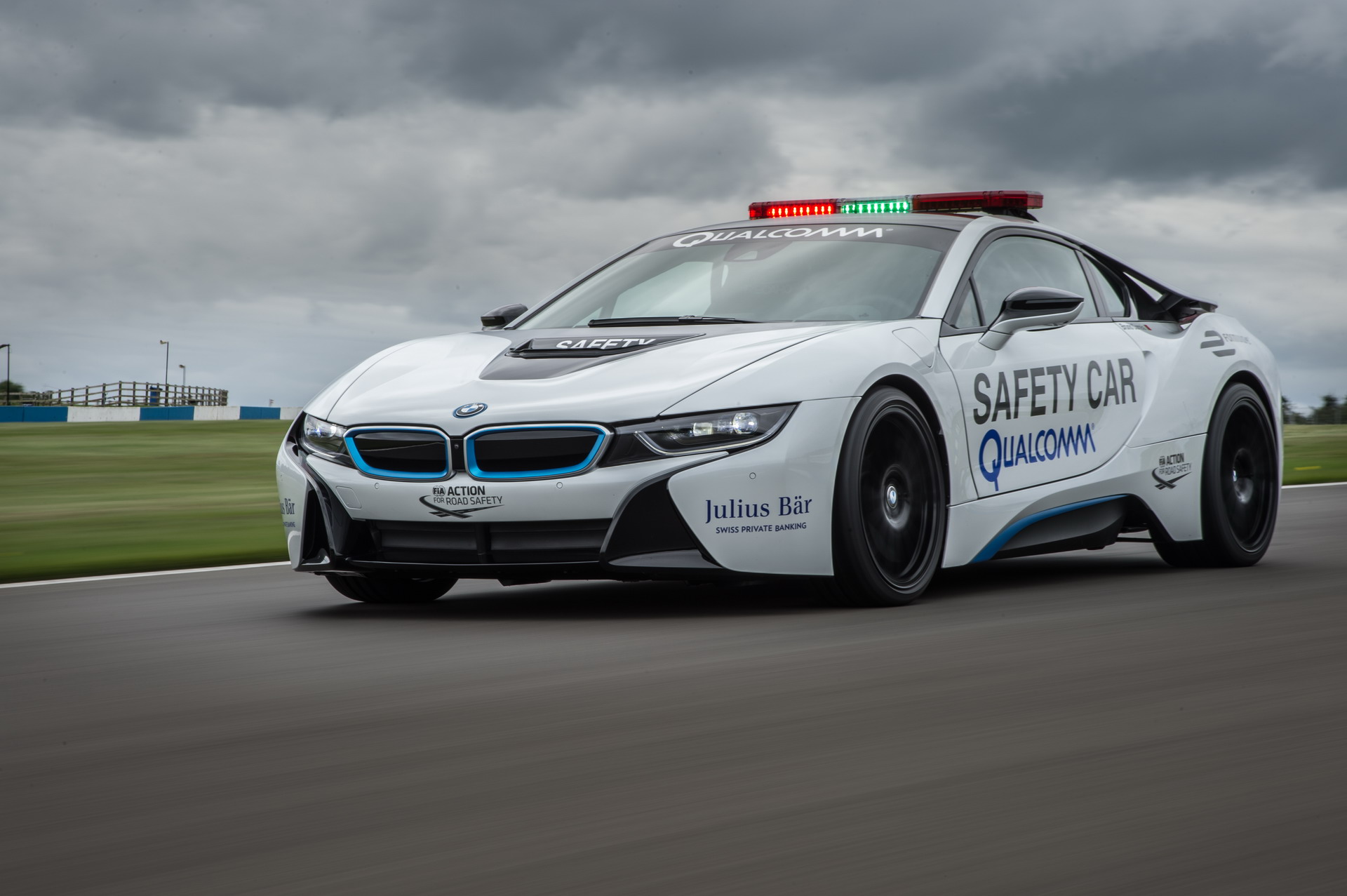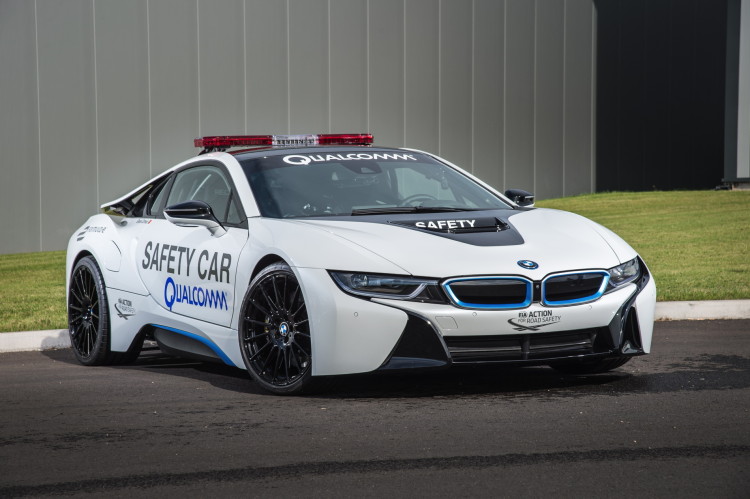CEO of Fia Formula E Alejandro Agag and Formula E safety car driver Bruno Correia drive round the Beijing ePrix track in the hybrid BMW i8 Safety Car. The BMW i8 Safety Car for Formula E is visually close to the i8 series model, but its tech was revised extensively.
The modifications to the two new Safety Cars are far more performance-oriented and they have been adapted to meet the FIA’s technical regulations. The new BMW i8 Safety Car is the world’s first vehicle equipped for inductive charging with 7.2 kilowatts of power using Qualcomm Halo™ prototype technology. This allows the high-voltage battery of the BMW i8 to be fully recharged in around one hour only.
Some of the technical solutions could go into a future BMW i8 S, as BMW M demonstrated with the BMW M4 GTS and its water injection technology first seen in the MotoGP Safety Car.
Here are the specs of the BMW i8 Safety Car:
- Range on electric power only (EU): up to 37 kilometres (23 miles)
- Overall range: over 600 kilometres (373 miles)
- System output of FIA Formula E Safety Car: approx. 380 hp
- Maximum system torque: > 570 Nm (420 lb-ft)
- Top speed: 250 km/h / 155 mph (using electric power only: 120 km/h / 75 mph)
- 0 – 100 km/h (62 mph): < 4.4 seconds; 80 – 120 km/h (50 – 75 mph): 2.6 seconds
Modifications to comply with FIA Formula E requirements:
- Certified safety cell – bolted and bonded to load-bearing elements of the body. Use of patented tube joints.
- New bank of LED lights and stroboscope light
- FIA radio equipment and transponder integrated into the vehicle electronics
- 2 x additional 12V sockets with 25A fuse
- Carbon-fibre racing seats
- Carbon-fibre centre console
- Six-point safety belt
- Removal of interior trim and airbags
- Modified trim elements on safety cell
- Modified position of safety belts
- Official decals






































































